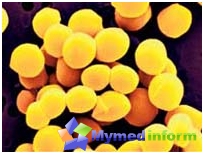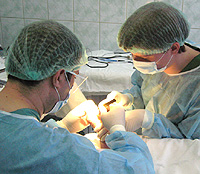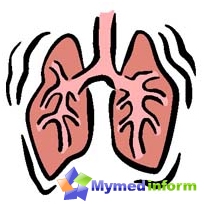Abscess is a delimited accumulation of pus in tissues and organs. The reason for the occurrence of abscesses is the pathogens of purulent infection. Treatment Only Surgical - Dissection and drainage of the cavity of the abscess.
Content
The concept of abscess
 Abscess (Synonym Equil) - Gnot's delimited accumulation in various tissues and organs. Abscess should be distinguished from phlegmon (spilled purulent inflammation of tissues) and empiemes (accumulation of pus in body cavities and hollow organs). Most often, the appearance of an abscess is due to purulent infection, the pathogens of which (staphylococcus, intestinal wand, protea, etc.) penetrate from outside (exogenous infection). In addition, there are often cases of endogenous infection in the dissemination of the process or transfer of causative agents of infection from neighboring or remote organs. For example, odontogenic, paratronzillary, subiaphragmal abscesses, metastatic abscesses of the lungs, brain, kidney, heart, spleen, etc. Introduction in tissue concentrated solutions of drugs, for example, a 25% solution of magnesium sulfate, may be accompanied by aseptic necrosis, followed by the formation of abscess.
Abscess (Synonym Equil) - Gnot's delimited accumulation in various tissues and organs. Abscess should be distinguished from phlegmon (spilled purulent inflammation of tissues) and empiemes (accumulation of pus in body cavities and hollow organs). Most often, the appearance of an abscess is due to purulent infection, the pathogens of which (staphylococcus, intestinal wand, protea, etc.) penetrate from outside (exogenous infection). In addition, there are often cases of endogenous infection in the dissemination of the process or transfer of causative agents of infection from neighboring or remote organs. For example, odontogenic, paratronzillary, subiaphragmal abscesses, metastatic abscesses of the lungs, brain, kidney, heart, spleen, etc. Introduction in tissue concentrated solutions of drugs, for example, a 25% solution of magnesium sulfate, may be accompanied by aseptic necrosis, followed by the formation of abscess.
The feature of the abscess is the presence of a pyrogen membrane - the inner wall of the purulent cavity, created by the surrounding focus of inflammation of tissues (manifestation of the normal protective reaction of the body). The pyrogen membrane is laid out with a granular tissue, it degrades the purulent necrotic process and produces exudate.
With superficial abscesses, local manifestations are characterized by classical signs of inflammation (redness, swelling, pain, local temperature rise, functional impairment), sometimes determined. With tuberculous spondylitis, the pus is often propagated by the interstitial slots away from the site of the initial occurrence (for example, on the medial surface of the hip), forming the excess abscess (undercurrent).
The main manifestations of abscesses
General clinical manifestations of abscesses are typical for purulent-inflammatory processes of any localization: an increase in body temperature from subfebrile to 41°C (in severe cases), general ailment, weakness, loss of appetite, headache. In the blood is observed leukocytosis with neutropylosis and leukocyte shift to the left. Soe is usually increased. The degree of these changes depends on the severity of the pathological process. In the clinical picture of abscesses of various organs there are specific features due to the localization of the process. The outcome of the abscess may be spontaneous autopsy with a breakthrough outward (abscess subcutaneous tissue, mastitis, paraproititis, etc.); breakthrough and emptying in closed cavities (abdominal, pleural, in the cavity of the joint and others.); breakthrough in the clearance of organs communicating with the external environment (intestine, stomach, bladder, bronchi, etc.). The empty cavity of the abscess under favorable conditions is reduced in size, falling down and subjected to scarring. With incomplete emptying of the abscess cavity and its poor drainage, the process can go into chronic to form a fistula. The breakthrough of the pus in closed cavities leads to the development of purulent processes (peritonitis, pleuritis, pericarditis, meningitis, arthritis, etc.).
Diagnosis and treatment
Differential diagnosis is carried out with a hematoma, a pile, decaying tumor. In this case, diagnostic puncture has great importance, which also allows bacteriological research - the selection of the pathogen and the definition of its sensitivity to antibiotics.
The diagnosis of abscess is an indication for operational intervention, the purpose of which (regardless of the localization of the process) is the opening of the purulent cavity, its emptying and drainage.
Treatment of small superficially located abscesses of subcutaneous tissue is carried out in an outpatient basis. Operation can be performed under local infiltration anesthesia novocaine, lidocaine or intravenous anesthesia.
In other cases, as well as in suspected abscess of internal organs, patients are subject to urgent hospitalization in the surgical department. With some abscess, for example, liver, light, sometimes conduct puncture with an aspiration of pus and the subsequent introduction of antibiotics abscesses, enzyme preparations into the cavity. Resection of the organ (for example, lung) together with an abscess as a radical flow method apply only with chronic abscesses. With the formed abscesses of the brain with a well-pronounced capsule, it is possible to remove an abscess along with its capsule.
Treatment after opening abscess is the same as the treatment of purulent wounds. Patients provide full-fledged balanced nutrition, they can be shown the transfusion of blood preparations, blood substitutes. Antibiotics are prescribed with sensitivity to them microflora. Specific therapy are used - staphylococcal aetoksin, specific gamma globulin. In abscess developing on the background of diabetes of sugar, a correction of impaired metabolism is required.
The forecast with a timely manner at the treatment of superficially located abscesses, easily accessible to operational intervention, in most cases favorable. Under late operation, an ineading drainage of abscess is possible to transition to a chronic form and generalization of infection.









